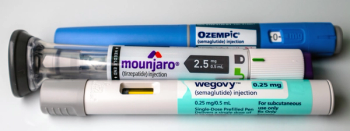
- September 2022
- Volume 88
- Issue 09
Cash Pay Mail-Order Pharmacy Emerges
Another market innovation continues the bifurcation of the profession's practice as community pharmacies become generics businesses.
Millions of times every day, patients show up at pharmacy counters to get prescriptions filled, and a pharmacy technician says, “It looks like this will cost you X with your insurance, but if you use a discount card it will be X minus Y.”
Discount cards, subscription programs, and other direct-from-consumer payment models are not going away and will continue to grow. GoodRx has 20 million users each month, and pharmacy benefit managers (PBMs) are buying and building their own versions of discount cards to leverage their principal asset: a contracted pharmacy network.1 Why? Because increasingly, the community pharmacy business is becoming a generics business while specialty pharmacy moves to mail order, and most of those generics are trending toward “penny drug” acquisition cost or not much more per pill. Justifying insurance against such inexpensive medications requires actuarial and intellectual gymnastics, and more pragmatically leaves less room for third-party arbitrage, also known as spread pricing. Using the terms coverage and insurance to describe the addition of cost to a transaction instead of a reduction makes no sense. So patients move from using their insurance cards to their discount cards, as the latter become the dominant and more appealing price point. Ironically, discount cards are becoming the main arbitrage opportunity for PBMs.
Mail-Order Wars: PBMs vs Cash Pay Direct to Customer
Nonmanufacturer-sponsored discount cards have steadily eaten into the number of cash pay transactions as consumer awareness of their savings opportunity has grown. However, what happens when the pharmacy’s customary price is cheaper than the discount card offers? The cash pay marketplace, with no transaction with any third party, is set to be reborn after its swan song on January 1, 2006, the day Medicare Part D coverage began.2 Now that cash pay marketplace has reached the mail-order marketplace. Previously dominated by PBMs self-channeling members to their service, entrants such as Mark Cuban Cost Plus Drug Company and start-up DiRx’s subscription cost models look to drive pharmacy toward a more patient-oriented, shop-with-your-feet (to the mailbox?) model. Both these entities purport to work directly with manufacturers to cut out intermediaries and unfair pricing. This recalls Diamonds Direct and Mattress Factory, other retailers that sell individuals on the idea they are getting a better deal if they do not engage the entire supply chain. Of course, community pharmacies are not opposed to getting rid of intermediaries, if they are not considered intermediaries themselves.
Is Mail Order Cheaper?
But is it all really cheaper? In most instances, when compared with insurance “coverage,” the resounding answer seems to be yes. Patients are making price point decisions to not use their “insurance” by the millions of customers and billions in transactions. Yet is the direct-from-consumer payment model a better deal in the mail order setting vs the community setting? Perhaps not. Remember Walmart’s $4 list that shook the pharmacy world more than a decade ago?3 All the chains followed suit and they have been found to be even cheaper on average. In fact, based on interviews with many pharmacy owners this past month, it seems that Cuban’s “cheaper than anyone” model may not be the case, once factoring in shipping costs.
The Practice Wars
This all assumes that nobody needs a health care service to accompany “right pill, right bottle” minimum necessary activity to dispense a prescription legally. Pharmacists and other pharmacy staff are moving toward a services-based business model to survive. So, there is a continued bifurcation of the pharmacy business model. The first focused on reducing the pharmacy to the bare minimum mechanics of dispensing where sustainability comes from acquisition costs and retail pricing, with nothing else offered. The second focused on services related and unrelated to dispensing but certainly focused on better health outcomes. Should one buy a $1 coffee or spring for a $5 coffee? Well, the $5 coffee model, with a unique experience and selection, seems to be doing quite well in the United States (see Caribou Coffee and Starbucks, among others). Add in health care services such as immunizations, point-of-care testing, and other adjunctive services, and pharmacies will not be so monolithic but will coexist with diverse ways of practicing and with different business models, having patients selecting the experience and services they most value. Patient choice is possible in a cash pay model and not in the current third-party coverage model, where quality, experience, and service selection are chosen on their behalf.
End of Branded Drugs
Generic dispensing rates are approximately 90% for most plans and marching steadily toward 95% over the next few years.4 Simultaneously, specialty pharmacy continues to grow, but more slowly at 2% in number of fills, despite rapid growth in the total proportion of the drug spending.5 Meanwhile, “specialty-lite” eventually will consume the remaining 3% of fills, cannibalizing what used to be called branded drugs, reimbursement for which was negotiated alongside generics in the same contract. Yet with generics moving to the discount card and direct from the patient cash pay model, there may be a bifurcation into 2 systems of procurement and remuneration. Only time will tell.
ABOUT THE AUTHOR
Troy Trygstad, PharmD, PhD, MBA, is the executive director of Community Pharmacy Enhanced Services Network (CPESN) USA, a clinically integrated network of more than 3500 participating pharmacies.
REFERENCES
1. GoodRx and Capital One Spring work to bring low-cost medications to small businesses. GoodRx. May 2, 2022. Accessed September 6, 2022. https://www.goodrx.com/corporate/business/goodrx-capital-one-springbring-low-cost-medications-to-small-businesses
2. Important notice about your Medicare supplement (Medigap) outpatient prescription drug coverage. Centers for Medicare & Medicaid Services. Accessed September 6, 2022. https://www.cms.gov/Medicare/Prescription-Drug-Coverage/CreditableCoverage/Downloads/CCNoticeCMSNAICapprvd.pdf
3. $4 prescriptions. Walmart. Accessed September 6, 2022. https://www.walmart.com/cp/4-prescriptions/1078664
4. Prescription drugs: spending, use, and prices. Congressional Budget Office. Updated January 21, 2022. Accessed September 6, 2022. https://www.cbo.gov/publication/57772
5. Net spending on specialty pharmaceuticals surging. U.S. Pharmacist. January 22, 2021. Accessed September 6, 2022. https://www.uspharmacist.com/article/net-spending-on-specialty-pharmaceuticals-surging#:~:text=Nonetheless%2C%20the%20authors%20provided%20valuable,fills%20for%20the%20overall%20population
Articles in this issue
about 3 years ago
Adlarity From Coriumabout 3 years ago
Generic Product News: September 2022about 3 years ago
Pharmacists Are Empowered Yet Againabout 3 years ago
Rx Products News: September 2022about 3 years ago
OTC Cases: September 2022about 3 years ago
ABM Offers Opportunity for Professional Growthabout 3 years ago
Court Addresses Liability in Dispensing Controlled Substancesabout 3 years ago
Mitigate Risk for Errors Involving Paxlovidabout 3 years ago
OTC Products: September 2022about 3 years ago
Pet Peeves: September 2022Newsletter
Stay informed on drug updates, treatment guidelines, and pharmacy practice trends—subscribe to Pharmacy Times for weekly clinical insights.

















































































































































































































